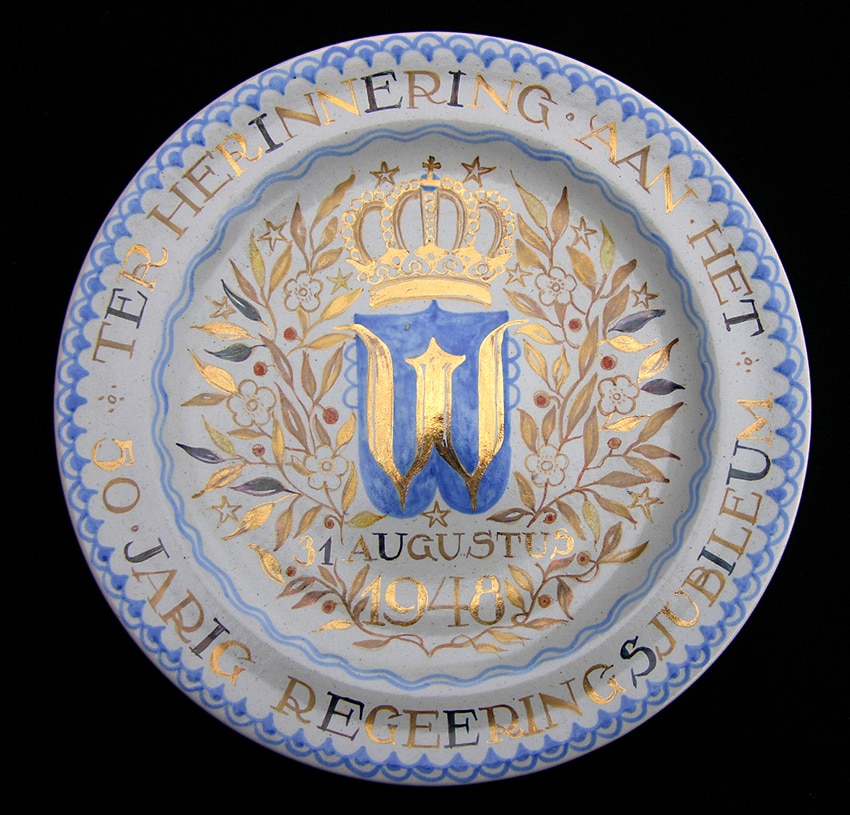Press information archive 2013
- Henk Brans, one of the journalistic highlights of 2013, De Kanaalstreek-TAC, 30-12-2013
- Drenthe museum with Gouda roots, Goudse Post, 31-12-2013
- Rabobank Museum Day, in Dichterbij, edition Rabo Borger-Klenckeland, 30-11-2013
- Valuation Vanderveen, Janna zuiderveld, Dagblad van het Noorden, editorial office Assen, 12-11-2013
- Goedewaagen presents again Rabobank Museum Day, www.kanaalstreek.nl, 23-10-2013
- Goedewaagen, Marianka Peters, Goudse Post and De Lekstreek, 23-10-2013
- New Buiner production of 75 KLM houses celebrated, Week-in, Week-out, 16-10-2013
- Book about KLM houses from Nieuw-Buinen, DvhN, 07-10-2013
- The stories behind the KLM houses, Bernd Otter, DvhN-Drentse edition, 07-10-2013
- Sushi bowls by Joan Seyferth, Kanaalstreek-TAC, 18-09-2013
- Delft blue caps and hats, Kanaalstreek-TAC, 04-09-2013
- Zweitse Landsheer, in: Clay, no. 4, p. 30, July-August 2013
- Give the pipe to Margriet, in: Vrouwen van Nu, 71st Jrg., nr. 3, p. 14-16, June 2013
- Henk Brans found blowpipe of father, Kanaalstreek-TAC, 26-06-2013
- Discount Goedewaagen, Kanaalstreek-TAC, 29-05-2013
- Hilversum Plateelbakkerij Delft, Gooi and Eemlander, 22-05-2013
- Royal Goedewaagen buys Urncenter Schoonhoven, Weekblad De Lekstreek en Goudse Post, 13-05-2013
- Royal Goedewaagen next to ceramics in urns, DvhN, 08-05-2013
- Hòlt - the personal choice of an exhibition maker, Kunst- & Museumkrant Noord-Nederland, p. 13, 03-05-2013
- Zweitse Landsheer, ornamental vases and tableware, Art & Museumkrant Noord-Nederland, p. 20, 03-05-2013
- Goedewaagen Ceramic Museum, Art & Museum Newspaper North-Netherlands, p. 32, 03-05-2013
- The unruliness of the woodcut, Wijke van der Bij and Hòlt, Leeuwarder Courant, 02-05-2013
- Unique portrait pipes from Goedewaagen, De Kanaalstreek-TAC, 24-04-2013
- Special exhibition 115 years of Orange traditions, Goudse Post, 24-04-2013
- Royal pipes, DvhN-Drentish editions, 20-04-13
- Earthenware pipes in honour of the change of throne, Kanaalstreek, 19-04-2013
- Royal Goedewaagen presents pipes Juliana, Beatrix and Willem-Alexander, Kanaalstreek, 19-04-2013
- Goedewaagen back in Gouda, Goudse Post, 03-04-2013
- Proud of Gouda roots, Goudse Post, 03-04-2013
- National Museum Weekend, Kanaalstreek-TAC, 03-04-2013
- Craft driving ceramic industry?, Kanaalstreek-TAC, 13-03-2013
- Lecture Oranje-edties, Emmen-Nu, digital news paper, 02-03-2013
- Orange swap gives dynamism in factory, DvhN, 09-02-2013
- Royal Goedewaagen and coronation, RTV Drenthe, 07-02-2013
- Job Heykamp and Om de Noord, Ceramics - No 1, February 2013
- Former Emmens man wins ceramics award, DvhN, edition Drenthe, 26-01-2013
NIEUW-BUINEN - Next Saturday, in the ceramics museum Goedewaagen in Nieuw-Buinen, a book will be presented with all the facts about the KLM houses that rolled off the assembly line at Goedewaagen for decades. The houses are miniatures of real buildings in the Netherlands and Mark Zegeling visited them all to portray them in facts and stories. The book has become a tour of 500 years of Dutch architecture and history. It is also the start of an exhibition of an important part of the 4.5 metres of facades that make up the entire collection. Then it is also revealed how it all started with the Rijnbende company in 1952. They were given to business class passengers of KLM.
Nieuw-Buinen - The enormous variety of high-quality Orange editions from the Dutch earthenware factories is the theme of the lecture that curator Friggo Visser will give on Sunday 10 March in the Goedewaagen Ceramics Museum.
His focus is not specifically on the editions of the eight factories that merged into the present-day Goedewaagen group, but rather on the artistic qualities of Dutch pottery in general since the beginning of the industrial era.
And that beginning coincided with the last years of the not so beloved King William III. Five years after his death in 1890, Goedewaagen produced a well modelled portrait pipe of the monarch in the new technique of casting pipes in a plaster mould.
The inauguration of the 18-year old Wilhelmina led to a series of figural pipes from home and abroad, whereby the Gouda editions had to give way qualitatively to the German and French versions of the young queen.
Orange fervour was then also aroused at municipal level. In the city of Amsterdam, which had traditionally felt republican, the municipal council arranged for the publication in 1898 of an attractive calligraphic wall sign for Amsterdam schoolchildren, designed by the decorative artist Carel Adolph Lion Cachet and produced by Petrus Regout in Maastricht. That plate still looks refreshingly modern, when it is compared to a much more traditional plate from that year with a photo portrait of Wilhelmina by the same factory.
High-quality ornamental lettering by leading artists and editions for schoolchildren continued to be the common denominator of the Orange editions. Lion Cachet, and later Jaap Gidding, produced much calligraphy.
Certain motifs also became popular, such as the little tree with the apples of Orange. On the occasion of the wedding of Queen Wilhelmina to Prince Hendrik in 1901, Amsterdam schoolgirls received a flowerpot on a platter made of reddish-brick clay with a relief of a tree pressed onto it. Again a design by Lion Cachet, this time executed at the Amsterdam kunstaardewerkfabriek Amstelhoek. Only one specimen survived. The quality was not very good either.
A much better quality were the Delft Blue and gold-decorated Orange plates that from 1946 onwards were made in great variety for all kinds of Orange festivities to the design of Jaap Gidding and commissioned by the Rotterdam Lacquer and Paint Factory Molyn & Co. Meanwhile, these plates have become a much sought-after collector's item, with prices ranging from 150 to 300 euros.
It is precisely because the factories use artists of renown for the design of these special editions that the editions enjoy great appeal.
The lecture will start on 10 March at 14:30 and admission is five euros.


